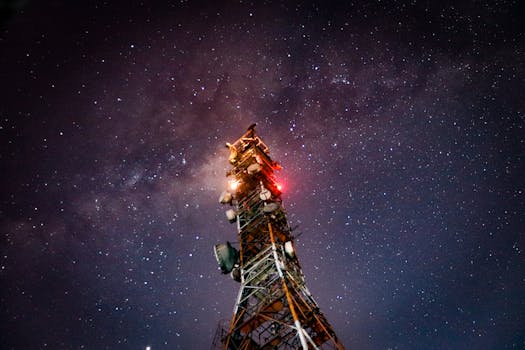
MEO satellites, or Medium Earth Orbit satellites, are a type of satellite that operates in an orbit between 2,000 and 36,000 kilometers above the Earth’s surface. This orbit is significantly lower than the Geostationary Orbit (GEO) used by traditional communications satellites, which are typically placed at an altitude of around 36,000 kilometers. The lower orbit of MEO satellites allows for faster and more reliable connections, making them an attractive option for a wide range of applications, including telecommunications, navigation, and Earth observation.
At the beginning of MEO satellites research, the primary advantage of MEO satellites is their ability to provide faster data transfer rates and lower latency compared to traditional GEO satellites. This is because the distance between the satellite and the Earth’s surface is significantly shorter, resulting in a reduction in signal delay. For example, a signal transmitted from a GEO satellite can take around 250-300 milliseconds to reach the Earth’s surface, while a signal from a MEO satellite can take as little as 10-20 milliseconds. This makes MEO satellites ideal for applications that require real-time communication, such as video conferencing, online gaming, and remote healthcare.
How MEO Satellites Work
MEO satellites work by using a network of satellites in medium Earth orbit to provide coverage of the entire Earth’s surface. Each satellite is equipped with a transponder that receives and retransmits signals to and from the Earth’s surface. The satellites are typically placed in a constellation pattern, with multiple satellites working together to provide continuous coverage of a specific region or the entire globe. This allows for seamless handovers between satellites as they move in and out of range, ensuring that the connection remains uninterrupted.
The use of MEO satellites also enables the implementation of advanced beamforming technologies, which allow for the creation of multiple, steerable beams that can be directed at specific locations on the Earth’s surface. This enables the satellite to provide targeted coverage of specific regions, reducing interference and increasing the overall efficiency of the system.
Applications of MEO Satellites
MEO satellites have a wide range of applications, from telecommunications and navigation to Earth observation and scientific research. One of the primary uses of MEO satellites is for telecommunications, where they provide high-speed internet connectivity to remote and underserved communities. This can be particularly beneficial for areas where traditional fiber optic cables are not available, such as in rural or developing regions.
MEO satellites are also used for navigation purposes, providing location information and timing signals to GPS receivers on the Earth’s surface. This is particularly important for applications such as aviation, maritime, and land transportation, where accurate navigation is critical for safety and efficiency. Additionally, MEO satellites can be used for Earth observation, providing high-resolution images of the Earth’s surface for applications such as weather forecasting, crop monitoring, and disaster response.
Benefits and Challenges of MEO Satellites
The use of MEO satellites offers several benefits, including faster data transfer rates, lower latency, and increased reliability. Additionally, MEO satellites can provide greater flexibility and scalability than traditional GEO satellites, as they can be easily reconfigured to meet changing demand and coverage requirements. However, there are also several challenges associated with the use of MEO satellites, including the need for more complex and sophisticated technology, as well as the potential for increased interference and signal degradation.
Despite these challenges, the use of MEO satellites is becoming increasingly popular, driven by the growing demand for high-speed, low-latency connectivity and the need for more reliable and efficient communication systems. As the technology continues to evolve and improve, we can expect to see even more innovative applications of MEO satellites in the future.
In conclusion, MEO satellites are transforming the way we communicate globally, offering faster and more reliable connections than traditional GEO satellites. With their ability to provide high-speed data transfer rates, low latency, and increased reliability, MEO satellites are an attractive option for a wide range of applications, from telecommunications and navigation to Earth observation and scientific research.

